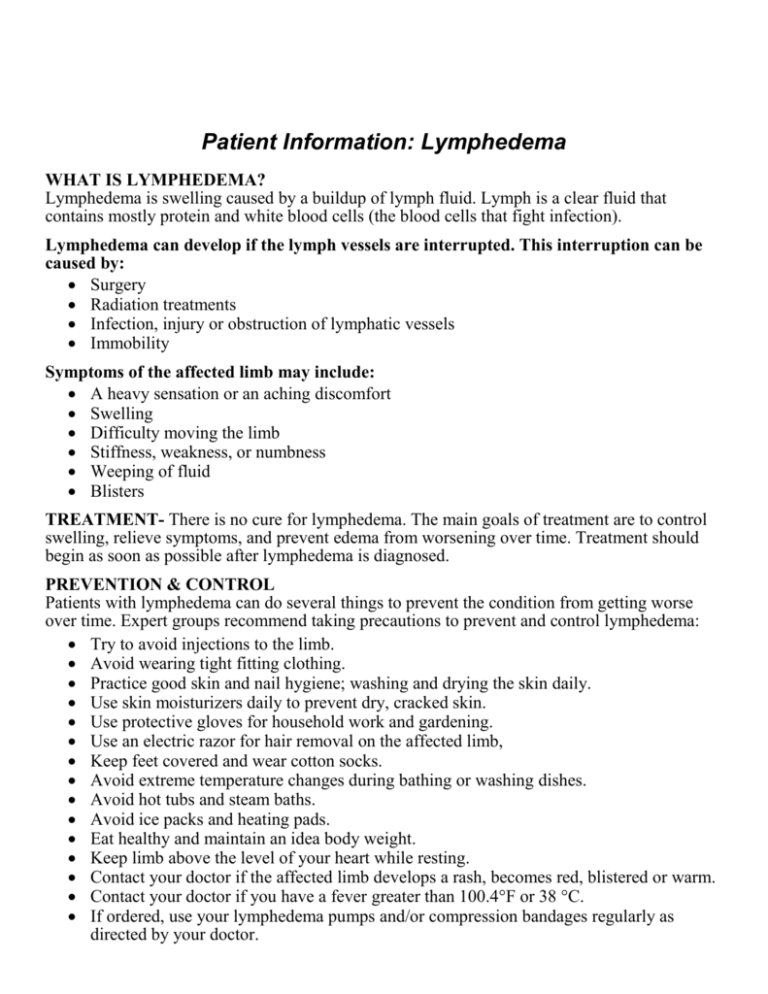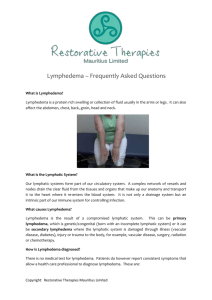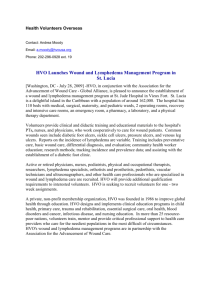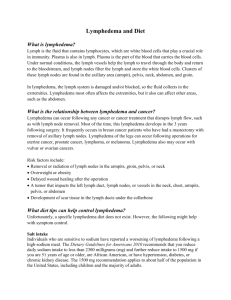Lymphedema Patient Information - Middlesex Surgical Associates
advertisement

Patient Information: Lymphedema WHAT IS LYMPHEDEMA? Lymphedema is swelling caused by a buildup of lymph fluid. Lymph is a clear fluid that contains mostly protein and white blood cells (the blood cells that fight infection). Lymphedema can develop if the lymph vessels are interrupted. This interruption can be caused by: Surgery Radiation treatments Infection, injury or obstruction of lymphatic vessels Immobility Symptoms of the affected limb may include: A heavy sensation or an aching discomfort Swelling Difficulty moving the limb Stiffness, weakness, or numbness Weeping of fluid Blisters TREATMENT- There is no cure for lymphedema. The main goals of treatment are to control swelling, relieve symptoms, and prevent edema from worsening over time. Treatment should begin as soon as possible after lymphedema is diagnosed. PREVENTION & CONTROL Patients with lymphedema can do several things to prevent the condition from getting worse over time. Expert groups recommend taking precautions to prevent and control lymphedema: Try to avoid injections to the limb. Avoid wearing tight fitting clothing. Practice good skin and nail hygiene; washing and drying the skin daily. Use skin moisturizers daily to prevent dry, cracked skin. Use protective gloves for household work and gardening. Use an electric razor for hair removal on the affected limb, Keep feet covered and wear cotton socks. Avoid extreme temperature changes during bathing or washing dishes. Avoid hot tubs and steam baths. Avoid ice packs and heating pads. Eat healthy and maintain an idea body weight. Keep limb above the level of your heart while resting. Contact your doctor if the affected limb develops a rash, becomes red, blistered or warm. Contact your doctor if you have a fever greater than 100.4F or 38 C. If ordered, use your lymphedema pumps and/or compression bandages regularly as directed by your doctor.











